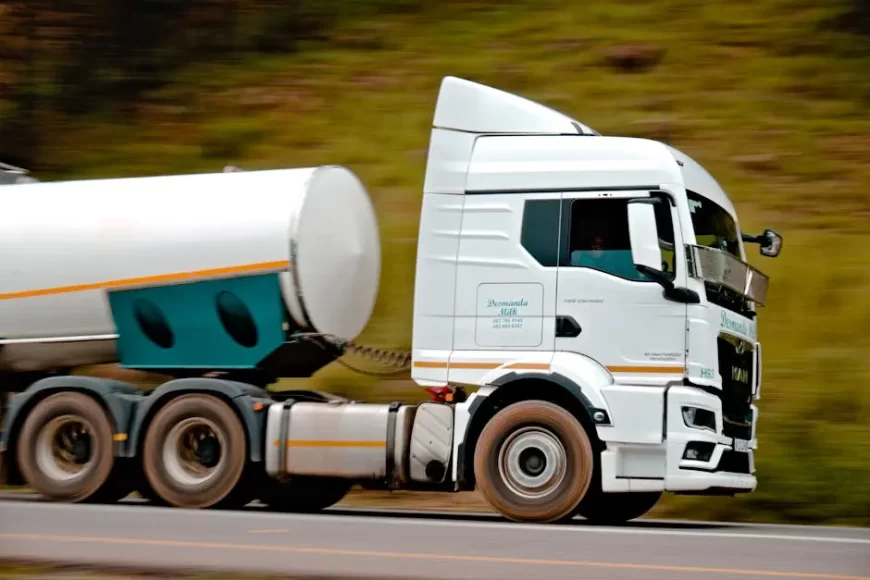- December 9, 2024
- By
- In Uncategorized
- 117
- 0

When it comes to road safety, load shift is a crucial factor that often goes overlooked. Whether you’re a truck driver or simply share the road with these massive vehicles, understanding the implications of load shift can contribute significantly to safer travel. In this blog, we’ll explore what load shift is, its impact on road safety, and how to effectively prevent it.
Load shift refers to the movement or displacement of cargo during transit. This can occur due to sudden stops, sharp turns, or even uneven road surfaces. The consequences of load shift can be severe, leading to accidents, vehicle damage, and even fatalities. Understanding how load shift happens is the first step towards preventing it.
In the context of trucking, load shifts present unique challenges. Imagine a truck hauling several tons of cargo; even a minor shift can destabilize the vehicle. Particularly under sudden braking or during emergency swerves, the entire balance of the vehicle is thrown off, often resulting in the driver losing control. Such incidents are not just theoretical concerns—they represent real threats on the road daily Impact on Injury Claims. Moreover, load shifts can lead to significant damages, not only to vehicles involved but also to the infrastructure around. When a cargo becomes unbalanced, it can severely hinder the driver’s ability to steer, sometimes resulting in rollovers or crashes.
The risks associated with load shift are not limited to truck drivers alone; all road users can be affected. If a heavy load destabilizes a vehicle on a busy road and spills onto the road, it can cause chaos, leading to multi-vehicle accidents. These scenarios highlight how crucial load management is to the safety of every road user. Understanding the specific nature of these risks helps in formulating adequate preventive measures and emphasizes the importance of compliance with load securing standards.
Proper loading techniques are essential in minimizing the risk of load shift. This includes distributing weight evenly, securing cargo with appropriate restraints, and ensuring the load is balanced. By following these best practices, drivers can drastically reduce the likelihood of shifts occurring during transit.
Each cargo loader and trucker has a responsibility to adhere to federal regulations that dictate how cargo should be placed and secured. The Federal Motor Carrier Safety Administration (FMCSA) outlines specific measures for this purpose. For instance, heavier items should be placed at the truck’s bottom to create a stable base, while lighter items can be stacked above. This methodology not only adheres to safety standards but also ensures more predictable driving dynamics, thus reducing the risks of load shifts. It’s critical for personnel involved in loading to undergo regular training updates, remaining informed about the latest safety practices and technologies.
Equally important is the use of high-quality restraint systems. These systems must be regularly checked and maintained to keep them in good working condition. No matter how secure the load appears, caution is always advised to prevent possible accidents while still in transit. It’s not just about putting the load in place; it’s about ensuring the entire system is foolproof, especially when facing unexpected challenges like abrupt maneuvers or changes in road conditions.
Modern technology offers an array of tools designed to prevent load shifts. From advanced load sensors to innovative restraint systems, these technologies provide real-time insights and offer added security for every journey. By incorporating these tools, companies and drivers alike can enhance the safety measures for their cargo.
One promising approach is the integration of sensor technology that can monitor cargo movement during transit. These sensors can alert drivers to potential shifts long before they result in a complete loss of control. Moreover, with advancements in telematics, trucks can now be equipped with systems that not only track load stability but also provide immediate feedback on driving conditions, allowing for timely corrections and adjustments. These technologies mitigate the human error factor and elevate the preventive measures beyond traditional methods.
Additionally, innovations in restraint systems, such as auto-tensioners and smart lashings, are revolutionizing how cargo is secured. By maintaining consistent tension and adjusting automatically to any changes in the cargo position, these systems significantly minimize the risk of load shifts during transit. The practical benefits of these technologies underscore the necessity for transport companies to invest in cutting-edge solutions, ultimately securing cargo more effectively and protecting the livelihoods and safety of drivers and road users alike.
Education and training programs for drivers are vital in fostering an understanding of load shift and its prevention. These programs equip drivers with the knowledge and skills needed to recognize potential hazards and implement effective countermeasures, ensuring they are prepared to handle any situation on the road.
Through comprehensive training sessions, drivers can learn about the dynamics of vehicle movement and how different load distributions affect truck stability. Such programs often incorporate practical demonstrations, where drivers witness firsthand the effects of improperly secured cargo. This immersive learning experience reinforces theoretical knowledge and encourages safer driving practices. Furthermore, continual education keeps drivers updated about new regulations and safety technologies, which continuously evolve to meet modern trucking demands.
The importance of fostering a culture of safety cannot be overstated. Regular refresher courses, combined with robust mentorship programs, can instill a stronger sense of responsibility and caution among drivers. It’s essential for companies to prioritize these training initiatives as a core part of their operational strategy, aligning business practices with the highest safety standards. By doing so, they not only protect their investments and personnel but also contribute to making the highways safer for everyone.
Awareness and proactive measures are key when it comes to preventing load shift and ensuring road safety. By understanding the risks and adhering to proper load securing techniques, drivers can play a pivotal role in reducing accidents and making roads safer for everyone.